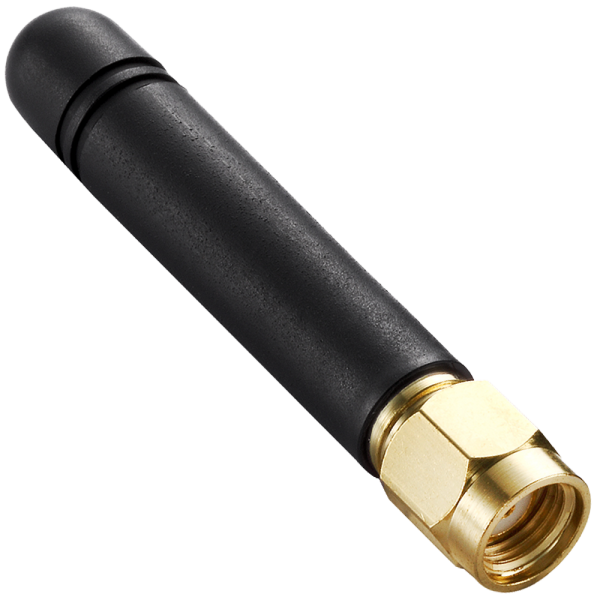Technical Specifications
| Parameter |
Value |
| Product Name |
GSM/GPRS Elbow Small Pepper Antenna |
| Frequency Range |
824-960 MHz / 1710-1990 MHz |
| Gain |
2.5 dBi |
| Impedance |
50 Ω (Ohms) |
| Maximum Power Input |
50 W |
| Length/Height |
50-52 mm |
| Interface Model |
SMA (Internal Screw Needle) |
| Key Characteristic |
Lightweight design |
Overview and Applications
This antenna is specifically engineered for devices operating on common GSM, GPRS, and 3G cellular bands. Its dual-band capability (824-960 MHz for GSM/GPRS/some 3G, and 1710-1990 MHz for DCS/PCS/UMTS/3G) makes it a versatile component for various applications, including:
- GSM/GPRS modems and terminals
- IoT (Internet of Things) devices
- Machine-to-Machine (M2M) communication modules
- GPS trackers with cellular fallback
- Remote monitoring systems
- Routers and gateways requiring external antennas
Its elbow form factor allows for flexible orientation, which can be beneficial in constrained spaces or for optimizing signal direction. The 2.5 dBi gain offers a good balance between omni-directional coverage and signal strength for its compact size, ensuring reliable data transmission and reception.
Technical Specifications
| Parameter |
Value |
| Product Name |
GSM/GPRS Elbow Small Pepper Antenna |
| Frequency Range |
824-960 MHz / 1710-1990 MHz |
| Gain |
2.5 dBi |
| Impedance |
50 Ω (Ohms) |
| Maximum Power Input |
50 W |
| Length/Height |
50-52 mm |
| Interface Model |
SMA (Internal Screw Needle) |
| Key Characteristic |
Lightweight design |
Overview and Applications
This antenna is specifically engineered for devices operating on common GSM, GPRS, and 3G cellular bands. Its dual-band capability (824-960 MHz for GSM/GPRS/some 3G, and 1710-1990 MHz for DCS/PCS/UMTS/3G) makes it a versatile component for various applications, including:
- GSM/GPRS modems and terminals
- IoT (Internet of Things) devices
- Machine-to-Machine (M2M) communication modules
- GPS trackers with cellular fallback
- Remote monitoring systems
- Routers and gateways requiring external antennas
Its elbow form factor allows for flexible orientation, which can be beneficial in constrained spaces or for optimizing signal direction. The 2.5 dBi gain offers a good balance between omni-directional coverage and signal strength for its compact size, ensuring reliable data transmission and reception.
